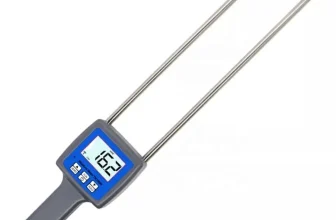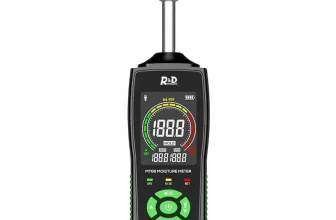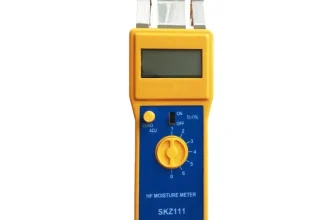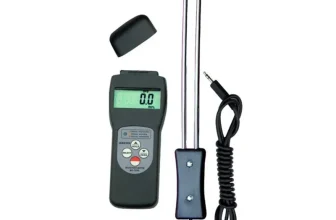Mold – the mere mention of the word can send shivers down one’s
spine. Often dismissed as simply unpleasant, it’s important to
understand that mold is not just an aesthetic issue; it has potential to
pose serious health and structural problems when left unchecked.
Mold is a type of fungus that thrives in damp environments and
reproduces by releasing spores into the air. It’s ubiquitous, and it’s
not always dangerous, but the presence of certain types of mold in high
concentrations, especially indoors, can lead to a myriad of
health-related issues. From allergic reactions and respiratory problems
to neurological damage and, in rare cases, death, the effects of
exposure to toxic mold should not be underestimated.
However, one of the major challenges regarding mold is its oftentimes
covert presence. Mold can grow inside walls, underneath flooring or
above ceiling tiles, rendering it invisible to the naked eye. Thus,
detecting mold at its early stages before it becomes a major problem is
critical. To that end, having a tool like a mold detection meter is
crucial.
Understanding Mold
Detection Meters
Definition
and basic principle of a Mold Detection Meter
A Mold Detection Meter is a specialized device used to detect,
identify, and quantify the presence of mold within a particular area.
Mold, a type of fungus, can cause various health issues, including
allergies, respiratory problems, and infections. Mold detection meters
play a pivotal role in ensuring that our living and working environments
are safe and mold-free.
The basic principle of a mold detection meter is fairly simple. These
devices are designed to identify mold particles in the air, on surfaces,
or within materials like drywall and wood. They work by taking samples
of air or surfaces and analyzing them to detect the presence and level
of mold. This information is valuable not only for identifying existing
mold issues but also for taking proactive measures to prevent future
mold growth. The better we can detect and quantify mold, the more
effectively we can maintain a healthy and safe environment.
How mold detectors work
Mold detection meters, as the name suggests, are specialized tools or
devices used to detect the presence of mold. They work by identifying
the conditions that are conducive to mold growth, such as elevated
moisture levels in building materials or poor air quality.
Primarily, these devices measure humidity, as mold thrives in humid
conditions. When a surface or area has a humidity level exceeding a
certain threshold, it’s likely that mold growth could occur if it hasn’t
already. High humidity levels could lead to condensation, creating an
ideal environment for mold.
Meanwhile, some mold detectors utilize laser technology to scan
surfaces and identify potential mold growth that isn’t visible to the
naked eye. Other detectors measure air quality, looking for the presence
of airborne mold spores, as these spores signify an increase in mold
development.
In summary, the functionality of mold detectors largely depends on
the principles of identifying crucial conditions that encourage the
growth and multiplication of mold. By effectively measuring these
conditions, they provide an insight into potential unseen mold problems
and allow for timely intervention to prevent further infestations.
Types of Mold Detection
Meters
Moisture meters
Moisture meters are one of the key types of mold detection gadgets.
They operate based on the basic principle that mold thrives in damp
environments. As the name suggests, moisture meters are used to measure
the amount of moisture in various materials.
These devices are typically handheld and can penetrate into the core
of various materials like wooden surfaces, drywalls, and carpets,
providing a clear picture of the amount of hidden moisture content. This
allows for swift identification of potential water leaks or dampness,
which can help in early mold detection. Some moisture meters are
equipped with thermal imaging capability, enhancing their ability to
spot hidden pockets of moisture that may not be apparent to the naked
eye.
However, moisture meters do not directly detect mold. High moisture
readings simply imply that the conditions are suitable for mold growth.
Further inspection or testing may be necessary to conclusively confirm
the presence of mold. It’s also important to remember that moisture
meters range in sensitivity, accuracy, and penetration depth, so
selecting a suitable model is crucial based on the intended use.
Infrared cameras
Infrared cameras, also known as thermal imaging cameras, are a type
of mold detection meter known for their ability to detect temperature
variations. These variations can indicate an environment suitable for
mold growth. Unlike visual examinations or sampling techniques, infrared
cameras provide an advanced, non-destructive means to locate moisture
and potential mold sites that may be hidden behind surfaces.
When infrared cameras are used correctly, they can easily detect
areas with excessive moisture based on the principle that cool areas may
harbor dampness. Consequently, dampness is a conducive environment for
mold spores to thrive, and the thermal imaging technology helps detect
these cooler moist spots.
It’s important to know that while infrared cameras are powerful tools
for spotting moisture and potential mold growth areas, they do not
directly pinpoint mold presence. So, while the identification of
moisture-laden regions signals possible mold growth, confirming the
presence of mold still requires other methods like mold testing or
sampling.
Nonetheless, the ability of infrared cameras to detect hidden
moisture spots makes them an invaluable primary tool in the mold
detection process. Professionals often use these cameras during
inspections to guide their sampling and make their efforts in mold
identification more targeted and effective.
Air quality testers
Air quality testers are a type of mold detection meter that serve as
a comprehensive tool to gauge the overall quality of air within a
specific area. They typically work by drawing in a sample of air from
the surrounding environment, which is then analyzed to identify the
presence of various pollutants, allergens, and, importantly, mold
spores.
These devices are quite instrumental in mold detection as they can
identify airborne mold spores, which can be easy to miss with other
methods. This is particularly important because airborne mold spores can
be inhaled, leading to an array of health issues. Air quality testers
are generally equipped with digital screens that display the level of
mold spores detected in the air, among other things. These devices can
provide real-time results, making them quite convenient, especially in
situations where immediate analysis is crucial.
However, while these devices can indicate the presence of mold spores
in the air, they may not pinpoint their exact source. Therefore, air
quality testers are often used as an initial step in mold detection, to
be followed up by other methods if mold is confirmed. These tools can be
especially advantageous for regular monitoring in buildings with a
history of mold or in areas prone to dampness.
Biochemical mold testers
Biochemical mold testers offer a more scientific approach to
identifying and evaluating mold presence. These devices utilize certain
chemicals and reactions which interact with mold spores, allowing better
identification and quantification of mold types.
This type of meter is typically designed as a kit that contains
separate components. The user must take samples from various locations,
often with a swab, which is then exposed to a specific chemical or
substance. The reaction between the substance and the sample indicates
the presence of mold.
It’s important to note that biochemical mold testers are often more
sophisticated and may require more effort and understanding to use
effectively. They can be an excellent option for detailed analysis,
especially in cases where the type of mold present must be
determined.
Some biochemical testers are capable of identifying specific mold
species, providing you with accurate information about what you’re
dealing with. However, interpreting the results often requires a basic
understanding of microbiology or the use of a professional lab
service.
In all, biochemical mold testers provide a way to not only detect but
identify mold species. This could prove invaluable in cases where
certain health risks are associated with specific mold types.
Importance of Mold
Detection Meters
Health
implications – Why it is important to detect mold at an early stage
Detecting mold at an early stage is crucial to preventing a host of
potential health problems. Mold spores, while natural and common in many
outdoor environments, can pose serious health risks when they find their
way indoors and multiply in large quantities.
Prolonged or excessive exposure to mold can lead to a variety of
health issues. For individuals with allergies, asthma or other
respiratory conditions, the presence of mold in a home or office can
exacerbate their existing health problems, causing symptoms like
wheezing, stuffy nose, red or itchy eyes, or skin rashes.
But it’s not just those with pre-existing conditions who need to
worry. Even for the healthy individuals, chronic and intense mold
exposure can lead to upper respiratory tract symptoms, including
coughing and wheezing. Some types of molds are highly toxic and produce
mycotoxins, which can lead to serious conditions such as neurological
problems and, in rare cases, even death.
Aside from physical health issues, mold can also impact one’s mental
health. Research has pointed to potential links between mold exposure
and mood disorders, with some studies indicating that it may contribute
to depression.
In short, the early detection of mold is not just a matter of keeping
the integrity of your property, but also maintaining the health and
well-being of the people within the space. By utilizing mold detection
meters, you can identify a potential problem before it advances,
allowing for prompt remediation and reducing the risk of experiencing
these health issues.
Material
damage – How detecting mold helps prevent damage to properties
Detecting mold at an early stage can save homeowners and property
managers a substantial amount of money and stress. Mold is a silent
destroyer of materials, particularly those found in building
construction like wood, drywall, carpet, and even concrete. It feeds on
these organic materials and gradually breaks down the structural
integrity of the building components, ultimately leading to material
damage.
Regular use of mold detection meters can help property owners avoid
such expensive damage. Early detection can prevent the spread of mold,
allowing for its timely removal before it takes a substantial toll on
the material integrity of one’s property.
Mold’s destructive nature isn’t exclusive to structural components
either. Personal belongings such as furniture, books, clothing, and
important documents are all susceptible to mold damage, which often
results in irreversible harm to these valuable items.
In addition to the financial implications of material damage, there’s
also the cost of mold remediation. Mold removal can be an extensive,
invasive, and high-priced process, especially when the mold growth is
too severe. By identifying mold in its early stages using mold detection
meters, the scope of remediation might be limited – resulting in lower
restoration costs.
In essence, using mold detection meters is a proactive measure that
protects properties from the potential damage and subsequent financial
implications caused by mold growth. Given the significant destruction
mold can cause to properties, investing in a mold detection meter can be
viewed as a step towards preventive maintenance, saving one from costly
repairs or replacements in the long run.
Using a Mold Detection Meter
Key steps in using a
mold detection meter
To effectively use a mold detection meter, there are several key
steps that you should follow. The first and perhaps the most crucial
step is to thoroughly read and understand the manufacturer’s
instructions. These instructions will direct you about the specifics of
your device – its use, cautions, limitations, and optimal operating
conditions.
The initial assembly, if required, is your next step. It typically
involves installing batteries and attaching any probes or sensors that
come with the device.
Before you start testing, you need to decide strategically where you
will carry out mold investigations. In typical home scenarios, focus on
damp or musty-smelling areas, or parts where there have been previous
incidents of leaks, flooding, or condensation.
Switch the meter on and let it adjust to the room conditions for the
time recommended by the manual. Once the device is well-adjusted, you
can start testing. For most meters, this generally involves placing the
device sensor, probe, or camera against or in close proximity to the
suspected area.
After capturing the measurements, it’s important to leave the meter
running for a few minutes in the affected area to get an accurate read.
Then, make a note of the readings. It may be useful to test multiple
areas, record the readings and compare them to get a comprehensive
understanding of the mold situation in your space.
Finally, always clean your device appropriately after every use and
ensure to store it in a clean, dry place. This ensures its longevity and
that it is ready for subsequent uses.
Note: Always respect the limitations of your device and do not use it
in conditions or manners that are not recommended by the manufacturer.
When testing, consider your safety first, particularly in severely
mold-infested areas, as exposure to mold can be hazardous to health.
Interpretation
of results from a mold detection meter
Interpreting results from a mold detection meter might seem a bit
intimidating initially, but understanding the readings can give property
owners critical insights into potential mold problems at an early
stage.
The interpretation largely depends on the type of meter being used.
For instance, moisture meters present an output in the form of
percentage or moisture content, where higher readings often indicate a
substantial presence of moisture that may heighten the risk of mold
growth. An optimum moisture level reading would typically be around
5-15%, but anything above 20% could be problematic.
Infrared cameras capture heat radiations from different objects and
convert them into images, known as thermograms. These do not directly
detect mold, but they identify wet and cold areas where mold is likely
to propagate. Any unusual or anomalous cold spots could potentially
indicate areas of excessive moisture and subsequent mold growth.
Air quality testers differentiate mold spores from regular dust
particles. These devices present readings in counts per cubic meter
(counts/m³), where higher counts often imply heavy mold contamination.
But, the acceptability of spore count is much subjective and varies
depending upon various factors including the genus of mold, location,
and individual’s sensitivity.
Biochemical mold testers rely on the reaction between certain
chemicals in the test kit and mold, which changes the color if mold is
present. Following the color guide provided, users can confirm the
presence of mold.
Understanding these interpretations is paramount in ensuring a safe,
healthy, and mold-free environment. However, you should bear in mind
that these instruments are indicative tools and cannot replace a
professional mold inspection. If the results are unsettling, it is still
recommended to contact professional services for a more precise
analysis.
Tips on purchasing a
Mold Detection Meter
Things to
consider when buying a mold detection meter
Purchasing a mold detection meter is not as straightforward as buying
any other home device. There are several considerations to make to
ensure you get a unit that’s effective, reliable, and tailored to your
unique needs.
First, consider the type of mold detection meter suitable for your
needs. As discussed earlier, there are several types, including moisture
meters, infrared cameras, air quality testers, and biochemical mold
testers. Each type has its unique benefits and is suitable for specific
situations. Hence, your choice should align with your specific
needs.
Second, accuracy is paramount when buying a mold detection meter.
Check the accuracy level of the device you intend to purchase. A very
accurate device will give you precise readings, which can be critical
when determining the level of mold infestation.
Third, the ease of use also matters. While some detection meters are
straightforward to use, others may be more complex and require some
technical knowledge. Choose a detection meter that you would find easy
to operate and understand.
Fourth, longevity is also a significant factor. Look at the
construction and overall durability of the device. A good mold detection
meter should be robust enough to last you for several years.
Fifth, consider the cost. While you want a reliable mold detection
meter, it’s essential to stick to your budget. In most cases, the price
of the device will mirror its features and overall quality. However, not
all expensive meters are the best, and not all cheap ones are bad.
Comparing different options and reading customer reviews can help you
find the right balance between quality and price.
Lastly, keep an eye on optional features that could be beneficial,
like a mold detection meter with data logging or connectivity features.
These extras can help track mold levels over time, enabling you to
monitor progress if you are treating a mold problem.
In summary, purchasing a mold detection meter is a crucial investment
that demands careful consideration. Balancing these parameters will
ensure you get the device that best fits your needs and budget.
The
best brands/ types of mold detection meters in the market
When it comes to making a purchase of a mold detection meter, having
a selection from high quality brands can save you a good deal of time
and guesswork. Here are some of the best brands and types that have
proven to deliver accurate and reliable results.
In the moisture meter category, the Battery Powered Pinless Moisture
Meter by EXTECH is recommended. This device uses non-invasive
measurements, meaning less damage to your walls.
General Tools produces an excellent Infrared Thermometer with an
intuitive point-n-shoot design. This tool can detect unusual thermal
patterns in walls that may suggest the presence of mold.
IAQ Pro Smart Indoor Air Quality Meter leads in the category of air
quality testers. It boasts an innovative design that measures multiple
parameters, including temperature, humidity, and particles present in
the air, which can give vital clues about possible mold growth.
The MyMoldDetective Mold Test Kit triumphs in biochemical mold
testers. This is an affordable, DIY testing kit. It allows homeowners to
collect and send samples to a certified lab for analysis.
Despite the top performing brands, it’s important to research and
choose the product that best suits your specific needs. Factors such as
cost, ease of use, and alignment with your specific concerns must also
be considered. Additionally, online reviews can provide real-world
insights about the efficiency and reliability of these tools.
Conclusion
Recap
of the importance and utilization of mold detection meters.
Mold, although a minute part of our ecosystem, can pose considerable
health risks and cause major property damage when left uncontrolled.
Mold detection meters provide a proactive means of identifying this
silent intruder early on. From moisture meters to infrared cameras,
biochemical mold testers, and air quality testers, mold detection meters
offer a variety of approaches in identifying mold infestations in our
homes and workplaces. The results given by these meters when properly
interpreted can be a lifesaver, preventing exposure to allergens and
toxic substances released by molds, as well as providing timely warning
to prevent major structural damages. It is evident that these devices
make an essential tool for homeowners, office managers, and
professionals in the construction and real estate industries. Investing
in a quality mold detection meter equates to commitment towards a
healthier living environment and saved costs in property maintenance. It
becomes incumbent upon us all to incorporate regular mold detection in
our environmental health strategies.
Encouragement
for reader’s responsibility towards mold detection.
In a world where we strive to create healthier, safer living
environments, the small task of regular mold detection is a
responsibility we should not overlook. It’s an undertaking that ensures
the air we breather indoors is free from harm, preserving the soundness
of our buildings and, more importantly, our health.
Using a mold detection meter not only assists in identifying
invisible threats but also helps initiate immediate actionable steps to
rectify them. Taking a little time to conduct these assessments could
make a sizeable difference in the wellbeing of you and your loved ones.
The responsibility of mold detection rests in our hands. With the right
tools at our disposal, we can ensure our homes and workplaces are clean,
secure and mold-free environments. It’s a small step, but one that has a
significant lasting impact. So, embrace this responsibility and make
mold detection a part of your regular home or office maintenance
routine. Remember, preventing mold growth is always easier than dealing
with its aftermath.







